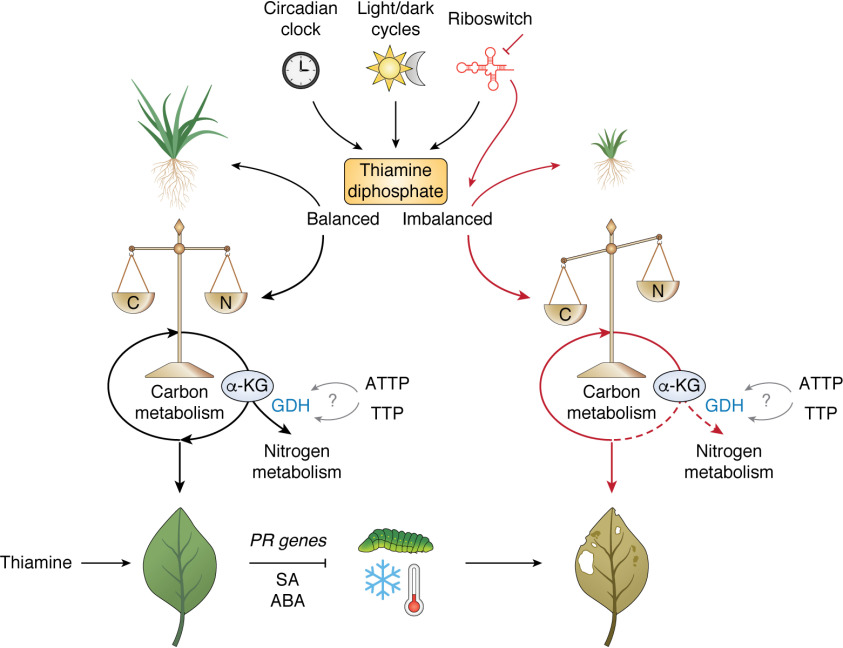Figure 4.
Importance of maintaining thiamine diphosphate balance in plants. TDP levels are regulated by the circadian clock, light/dark cycles, and a riboswitch. Balancing of TDP levels is important and may in turn be integrated into the balance of carbon (C) and nitrogen (N) that yields healthy thriving plants possibly mediated through α-ketoglutarate (α-KG) abundance. α-KG lies at the intersection between carbon and nitrogen metabolism and is metabolized by α-ketoglutarate dehydrogenase (not shown) during carbon metabolism by the TCA cycle or GDH during nitrogen metabolism. ATTP and TTP act as allosteric activators of GDH in mammalian systems, but a similar function in plants has not yet been explored. Application of thiamine primes plants against biotic stress via up-regulation of PR genes and salicyclic acid (SA). Thiamine also positively influences against abiotic stress via abscisic acid (ABA). Inhibition of riboswitch function (red line) leads to TDP imbalance. Inappropriate perturbation of TDP levels impacts carbon/nitrogen balance, plant health, and yield. This figure was made with BioRender.

